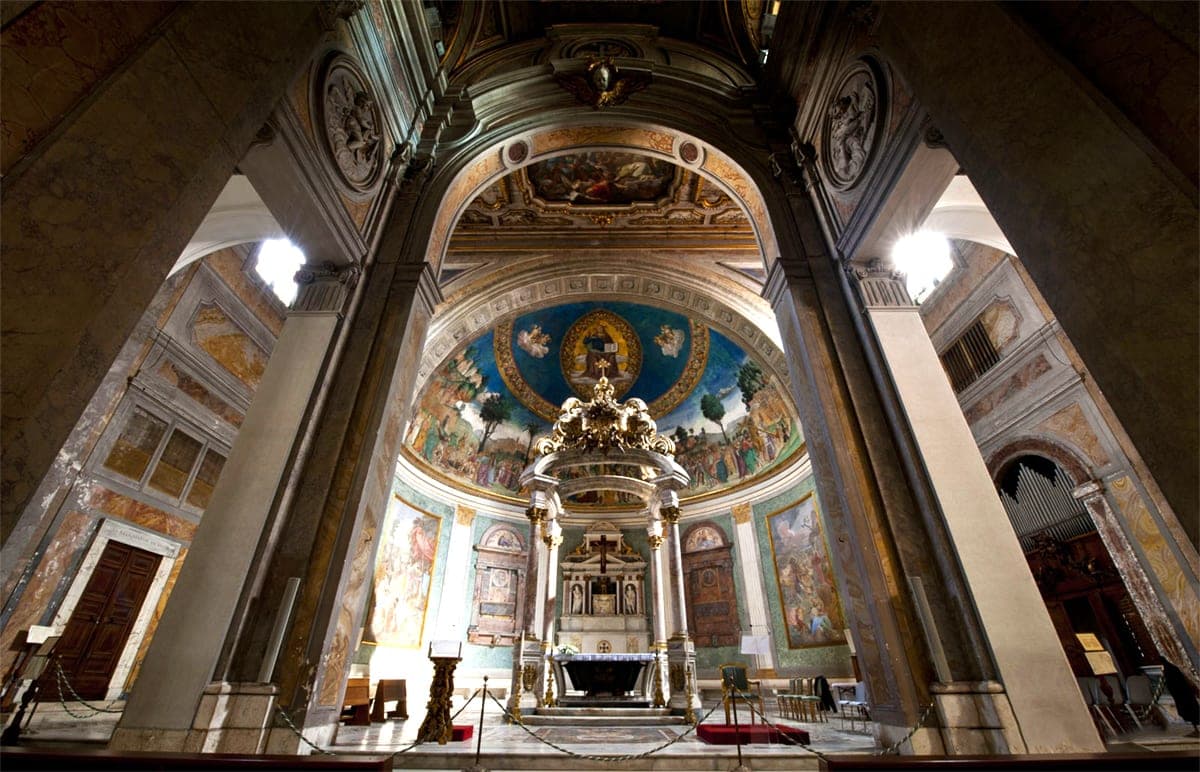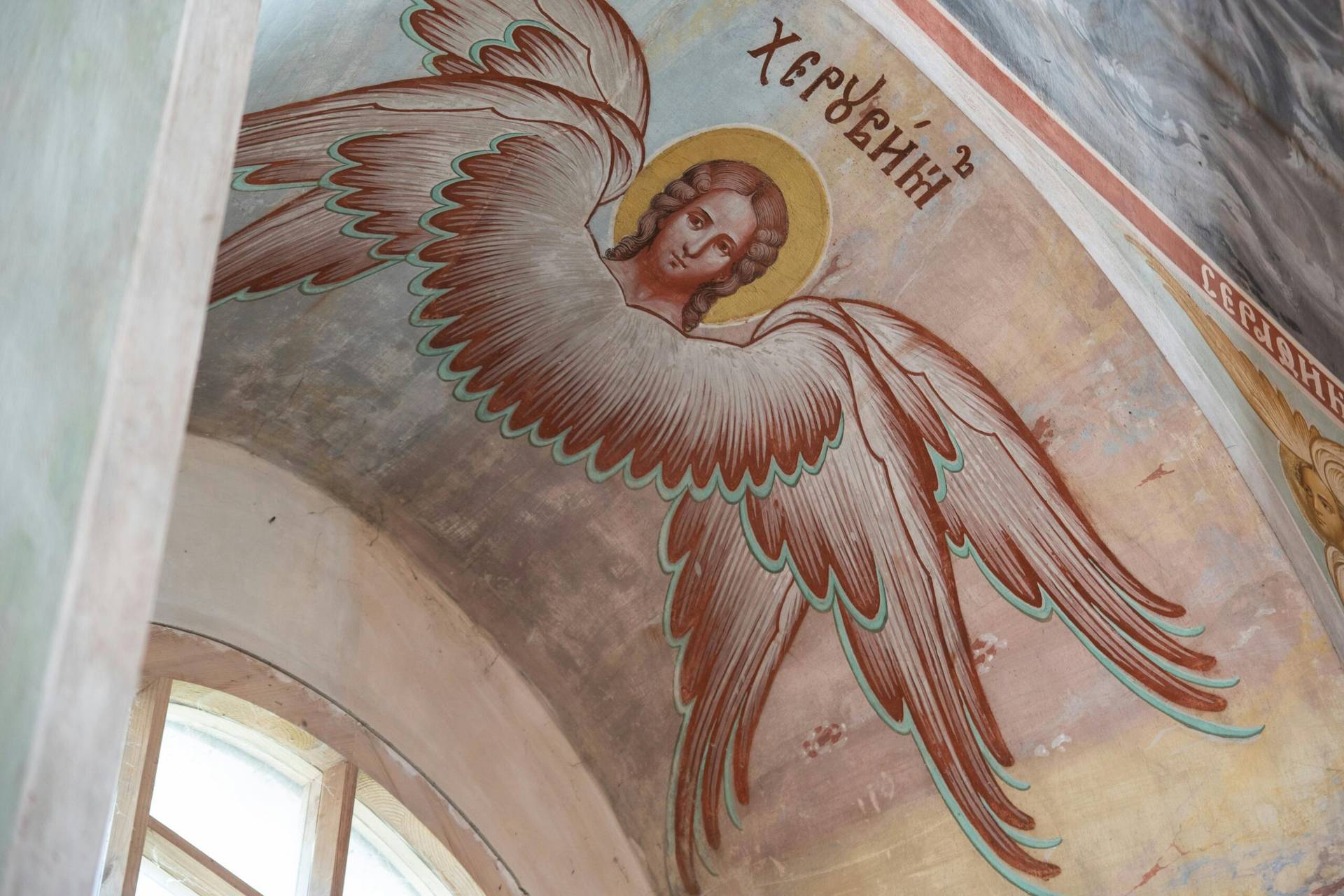This Sunday, the Church celebrates the Solemnity of Our Lord Jesus Christ, King of the Universe. Often abbreviated to “Christ the King,” the high feast day concludes the liturgical year and reminds believers of their first love and calls them to recommit themselves to Jesus Christ.
Of course, declaring Jesus Christ a king raises many questions that require clarifying answers. While these answers can be discerned in many places, a certain church of Rome provides some interesting insights.
For any standard pilgrimage to Rome, there is a list of principal holy places. Among such places is the Basilica of the Holy Cross in Jerusalem. The basilica was built in the fourth century to house the relics pertaining to the Passion of Jesus Christ that were being brought back to Rome by Queen Saint Helena.
As an act of deference to the Holy City and the saving events that happened there, the church was constructed upon soil that was also brought from Jerusalem. The portion of the church’s title that reads “in Jerusalem,” therefore, is intended to be taken literally, since the church sits upon a piece of the Holy City itself.
In the Basilica of the Holy Cross in Jerusalem, a pilgrim can find the revered Chapel of the Relics. The chapel is approached through a side entrance of the main church, which has a slight uphill movement, meant to resemble the hill of Calvary. Once in the chapel, pilgrims see a portion of the sign that was hung above the Cross, two thorns from the Crown of Thorns, part of one of the nails used in the crucifixion, the index finger of the Apostle Thomas, and three small pieces of the True Cross.
The relics are beautifully displayed in a backdrop with a marble rail surrounding them. Anyone can approach the relics. They are present for everyone and can be viewed or venerated by anyone.
Now, whether a believer is “into relics” or not, or whether the legitimacy and historicity of the relics of this basilica are believed or not, the relics stand with a pressing lesson that is much larger and more important than themselves.
The relics are tangible reminders that certain historical events happened over two thousand years ago, namely, a man of Israel was condemned, tortured, and killed by a Roman occupying force. For believers, these are the events by which the eternal Son of God, made man in Jesus Christ, suffered a torturous passion, died a terrible death for the salvation of humanity, and rose on the third day to share his everlasting glory with all those who believe in him.
For believers, who accept the claims associated with these historical events, everything in life is changed. Everything takes on new meaning, purpose, and value. The salvific actions of Jesus Christ opened a new and unimaginable door for the future of humanity.
The relics at the Basilica of the Holy Cross in Jerusalem are a reminder of these events and the profession of faith that flows from them. The relics point believers to the depths of Jesus’ love and speak of his willingness to suffer in order to show us that love and allow it to triumph over darkness and evil.
While the Chapel of the Relics could also be called the Chapel of the Passion, it could also just as well be called the Chapel of Divine Love.
With such raw and blood-stained testimony, how does the Basilica of the Holy Cross teach us anything about Christ being a king?
It sounds almost comical, satirical, or even derogatory to call Jesus, a suffering servant, a king. Kings hold power, yield might, command militaries, and rule in splendor. Admittedly, many want Jesus to do these type of things, but he does none of them. How then can Jesus realistically be called a king?
The kingship of Jesus is not of this world. He told Pilate this truth, but the procurator didn’t understand. The kingship Jesus brings implodes, converts, and redefines the kingship of this earth from the inside out. Having power, he serves. Having might, he shows humility. Having hosts of angelic forces, he submits. Having authority to rule, he accepts suffering.
In all these ways, Jesus is not the king that the world wants, because he is too consumed with being the king that this world needs. And so, the Chapel of the Relics could also assume the name, the Chapel of Christ the King.
For from this simple chapel, there shines out the bold witness of the eternal King, a king who conquers his enemies with suffering, builds up his kingdom with kindness, and extends his rule with selfless service. This is our King. This is Christ the King.















